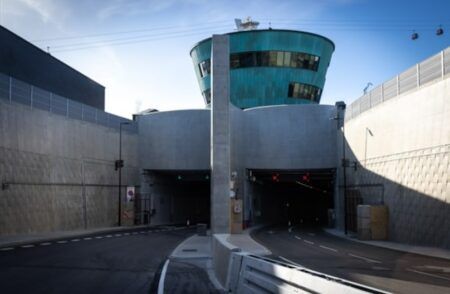The initial results of trials to determine the compatibility of the latest SAE Level 2 automated vehicle (AV) technologies with infrastructure on the EastLink toll road in Melbourne, Australia, have now been released.
The trials are being undertaken by EastLink in partnership with VicRoads, the Australian Road Research Board (ARRB), La Trobe University, and RACV, with the assistance of seven major vehicle manufacturers.
With hands-off-the-wheel driving on EastLink and other suitable freeways expected within the next few years, the trials have produced real results to help freeway operators and auto makers with the safe and early introduction of new semi-autonomous capabilities.
Defined as ‘hands-on partial automation’ with some automated functions for steering, acceleration and braking, the research has been conducted with the latest Level 2 vehicles provided by the widest range of manufacturers for a trials program of this type, including BMW, Honda, Mazda, Mercedes, Mitsubishi, Volvo, and most recently, Tesla. A Lexus has just commenced trials, and Audi and Toyota will soon be providing vehicles to assist with the program.
The trials have identified opportunities to improve the compatibility between the latest AV technologies and freeway infrastructure, including:
Good quality of line markings, including reflectivity and luminosity, on both sides of the lane are essential to avoid ‘drop outs’ of the lane keeping assist function, and to help a vehicle maintain its position centrally in a traffic lane;
Gaps in contiguous line markings should be avoided, as this may lead to drop outs of the lane keeping assist function or unintentional lateral movement;
In construction zones, the use of temporary yellow line markings conflicting with white line markings is incompatible with the lane keeping assist function, causing drop outs;
Consistency of speed signage format and placement, and maintaining line of sight visibility, will enable more reliable interpretation by vehicles;
Speed signs on freeway exit ramps or side roads need to be located well away from the main carriageway so they are not confused for main carriageway signs;
Conflicting or confusing speed signs should be avoided, as vehicles find it very difficult to determine the correct speed limit under these circumstances;
Roadside variable speed signs are read very well by some vehicles, while other vehicles are not yet reading them reliably;
The flashing annulus feature on variable speed signs is not expected by some vehicles, impacting recognition;
In general, overhead variable speed signs are not yet read reliably by vehicles;
Overhead open/closed lane control signs are not yet recognized and used by vehicles.




